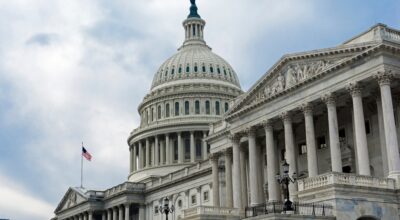
Primer: Codifying a 30 Percent General Tariff
President Donald Trump’s renewed use of tariffs has reaffirmed their power: revenues have reached historic highs, trade imbalances have narrowed, and companies are reinvesting in U.S. production. But executive action, however effective, might not last beyond the current administration. Without congressional codification, tariffs remain vulnerable to judicial intervention or reversal by a future president. To preserve this foundation of American strength, Congress must act—anchoring a 30 percent general tariff in statute, which it can do with multiple legal pathways. Reconciliation could be one of those precise tools to accomplish this, transforming a successful policy into permanent law and restoring tariffs to their rightful place at the center of American prosperity and security.
Why Congress Must Act
Tariffs are tools of trade and the constitutional instrument by which America historically financed its government, defended its independence, and built its industries. From Hamilton’s first tariff schedule to Lincoln’s protectionist platform to the industrial expansion that made America the world’s manufacturing leader, duties on imports have been the foundation of American sovereignty. They are how the people, through their elected representatives in Congress, exercise control over the nation’s economic fate.1
President Trump, who considers tariffs the “most beautiful word in the dictionary,”2 has already restored them to the center of American policy. His administration imposed baseline tariffs on nearly all imports and raised rates to 25, 30, and even 50 percent on key categories like steel, automobiles, and Chinese goods.3 Those measures have already produced record-high revenue for the Treasury, narrowed trade imbalances, and spurred investment in U.S. capacity.4 But because they were implemented under executive emergency authority, they remain vulnerable: A future administration could undo them with a stroke of a pen. That fragility is unacceptable.
The central policy goal of Congress must be to codify President Trump’s tariff structure in statute permanently. Only Congress can make tariff law durable. Only Congress can ensure that America does not return to a cycle where one administration defends American workers and the next administration dismantles their protection. A statutory 30 percent general tariff, enacted through reconciliation, would cement Trump’s breakthrough into the fabric of federal law.
The purpose is not only statutory permanence but also ideological principle. Tariffs embody three core American commitments: sovereignty, security, and protection of American workers. Sovereignty means we no longer allow global bureaucracies or foreign governments to dictate the terms of our economy. Security means we no longer rely on adversaries for medicines, rare earth elements, or technologies essential to our defense. Protection of American workers means restoring the promise that honest labor in U.S. factories can support families, communities, and the middle class. These are the cruxes of tariff policy.
The benefits extend far beyond principle. Tariffs reduce the trade deficit by forcing imports to compete on fair terms with domestic production. They encourage investment in U.S. industry by making long-term profitability in America predictable again. They create millions of jobs by reviving the sectors that traditionally made up the backbone of the middle class. A recent Center for Renewing America study confirms the scale of their effect: Comprehensive tariffs can generate up to $7 trillion in new federal revenue over ten years, create as many as six million jobs, and raise household incomes by nearly $10,000.5 In every modeled scenario, GDP grew above the baseline even when retaliation was assumed; inflationary effects of tariffs were shown to be modest and were quickly outweighed by rising wages and output.6 In fiscal terms, a 30 percent general tariff would immediately become one of the top three revenue sources for the Treasury, rivaling corporate income taxes and payroll contributions. That revenue can finance permanent tax relief, reduce deficits, and provide the fiscal stability Congress desperately needs.
The case is clear. Codifying tariffs makes permanent what Trump began, secures our sovereignty, and gives America the resources to rebuild its economy from within. Without it, the gains of recent years will be vulnerable to the whims and hostility of future administrations. With it, America reclaims its tradition of independence and strength.
How Congress Can Enact the Tariff
Congress holds plenary authority over tariffs. Article I, Section 8 of the Constitution empowers Congress “to lay and collect Taxes, Duties, Imposts and Excises” and “to regulate Commerce with foreign Nations.”7 That means tariffs can be enacted at any time through ordinary legislation, either as stand-alone statutes or as part of larger trade or tax bills. Reconciliation is not the only path, but it offers procedural advantages by limiting debate and overcoming the Senate filibuster; therefore, while reconciliation provides a fast track, Congress’s constitutional authority to legislate tariffs is permanent and unrestricted.
The straightforward path for codifying tariffs is budget reconciliation. The Congressional Budget Act expressly permits adoption of a revised budget resolution in the same fiscal year, and such a resolution may include reconciliation instructions to the House Ways and Means Committee and the Senate Finance Committee.8 Reconciliation procedures themselves are governed by Section 310 of the act.9 Customs duties are classified as federal receipts and are scored as revenue by the Congressional Budget Office.10 That means a general tariff is neither incidental nor extraneous, following the Byrd Rule,11 and is exactly the sort of measure reconciliation was designed to carry out.
The reconciliation instructions should be drafted as a universal surtax of 30 percent on all imports, imposed in addition to existing duties. It must apply to de minimis shipments to prevent evasion through e-commerce and to goods entering through bonded warehouses and foreign-trade zones. It should double penalties for customs fraud and raise user fees to fund enforcement, thereby increasing receipts and protecting revenue. To satisfy reconciliation’s budget rules, the surtax should sunset at the end of the ten-year budget window, though Congress will always retain the option to renew it.12
The bill need not be long. A single operative section imposing the surtax coupled with provisions on enforcement, revenue protection, and conforming amendments would suffice. The wording should be flexible to avoid tying the president’s hands in negotiating deals with other nations.
Conclusion
The time for hesitation has passed. America cannot continue lurching from one administration’s tariff regime to another’s retreat. The people’s representatives must legislate tariffs into permanence. A 30 percent general tariff would guarantee stable revenue for the Treasury, reduce the trade deficit, defend American workers, and reindustrialize the nation. It would fulfill the three timeless principles of sovereignty, security, and protection of labor.
Congress has the authority and the means to enact this measure today. The question is no longer whether tariffs work—the evidence that they do is overwhelming. The question is whether Congress will enshrine them as the law of the land, secure America’s independence, and make permanent the achievements of President Trump’s America First trade policy, the policy that the American people have given the current Republican majority in Congress the mandate to carry out.
Endnotes
1. U.S. CONST. art. I, § 8, cl. 1 (showing that the power to “lay and collect Taxes, Duties, Imposts and Excises, to pay the Debts” is one of Congress’s core constitutional duties).
2. Michael Lowell, Philippe Heeren, Justin Angotti, Lizbeth Rodriguez-Johnson, Kirsten Lowell & Courtney E. Fisher, Trump 2.0 Tariff Tracker, Trade Compliance Resource Hub (Aug. 15, 2025), https://www.tradecomplianceresourcehub.com/2025/08/15/trump-2-0-tariff-tracker/.
3. Exec. Order No. 14,257, Further Modifying the Reciprocal Tariff Rates (July 31, 2025), THE WHITE HOUSE, https://www.whitehouse.gov/presidential-actions/2025/07/further-modifying-the-reciprocal-tariff-rates/ (July 31, 2025).
4. Amanda Macias, July Tariff Revenues Break Monthly Record, With $150 B Collected So Far in 2025, Fox Business (July 29, 2025), https://www.foxbusiness.com/politics/july-tariff-revenues-break-monthly-record-150-billion-collected-so-far-2025; The Trump Effect: A Running List of New U.S. Investment in President Trump’s Second Term, THE WHITE HOUSE (Aug. 5, 2025), https://www.whitehouse.gov/articles/2025/08/trump-effect-a-running-list-of-new-u-s-investment-in-president-trumps-second-term.
5. Comprehensive Tariffs Can Rebuild the US Economy and Provide $7 Trillion in New Ten-Year Government Revenue, CTR. FOR RENEWING AM. (2024), on file with staff.
6. Id.
7. U.S. CONST. art. I, § 8, cl. 1.
8. See Congressional Budget Act of 1974, § 304 (codified at 2 U.S.C. § 635).
9. Id. § 310 (codified at 2 U.S.C. § 641).
10. Congressional Budget Office, How CBO Projects Tariff Revenues (October 2024), https://www.cbo.gov/system/files/2024-09/60692-Tariffs.pdf.
11. Congressional Budget Act of 1974, § 313 (codified at 2 U.S.C. § 644).
12. Id.





